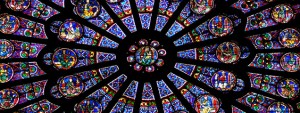The subject of artwork has caused its fair share of controversy among followers of Jesus. From opposition to religious images by Byzantines in the eighth and ninth centuries to debate among the Reformers over what forms of art were acceptable,  Christians have long differed over the role of artwork in a Christian worldview. But amid the debate, believers have almost always agreed that art appreciation is part of a Christian worldview. That belief stems from the Bible itself, which says much related to aesthetics, artwork, and creativity. Consider the following:
Christians have long differed over the role of artwork in a Christian worldview. But amid the debate, believers have almost always agreed that art appreciation is part of a Christian worldview. That belief stems from the Bible itself, which says much related to aesthetics, artwork, and creativity. Consider the following:
— God is the ultimate artist. There can never be a creative act more magnificent that God’s fashioning of the universe. Genesis 1-2 provides details related to color and light and notes that the trees God created were not present merely for food but as objects “pleasant to the sight” (Genesis 2:9). Imaging God, Christians have contended, surely includes imitating His creativity through artwork.
— In the Old Testament, God assumed there would be visual artists among His people. At the construction of the Tabernacle, He appointed Bezalel and Oholiab “to devise artistic designs” (Exodus 31:4). Again at the building of the Temple, artists were required to fashion the intricate particulars of the design, from carving 15-foot cherabim of olivewood (1 Kings 6:23) to engraving “all the walls of the house” (1 Kings 6:29). When God commanded Moses in the wilderness to fashion “a fiery serpent and set it on a pole” (Numbers 21:8), He presumed there was a metalworker to craft the bronze serpent.
— Scripture celebrates all five senses as means of experiencing God’s good creation. Song of Solomon 1:1-5 illustrates this well, with the Shulamite woman extoling the touch, taste, smell, sound, and sight of her lover. The God who created all five senses intended for His people to use them all, including the viewing of artwork, to appreciate His handiwork.
— Although the New Testament isn’t as explicit in its commendation of artwork, Paul commanded the Philippians to set their minds on “whatever is lovely” (Philippians 4:8). Surely that command includes the appreciation of artistic beauty.
— Revelation’s descriptions of heaven assume God’s people have cultivated a taste for things that are aesthetically beautiful. Foundations “adorned with every kind of jewel” (Revelation 21:19) and the “river of the water of life, bright as crystal” (Revelation 22:1) clearly appeal to mankind’s desire for artistic beauty.
Of course, the Bible warns against using artwork for idolatrous purposes. That is made explicit in the Second Commandment (Exodus 21:4), and the harmful effects of ungodly artwork are illustrated in the account of Israel’s making a golden calf (Exodus 32). Further, Scripture’s emphasis on the word as God’s primary means of communicating with humans (e.g., Romans 10:17) precludes using art as the only expression of our faith.
Still, Augustine of Hippo was right when he argued that the good, the beautiful, and the true are really one in the same—and they are all of God. Christians have taken that reality to heart through creating artistic expressions as diverse as Sistine Chapel frescoes painted by the Roman Catholic Michelangelo, the Reformation’s simple Bible illustrations and depictions of “secular” life, and the countless paintings, ceramics, and sculptures created by believers today. So the next time you take brush, pencil, chalk, clay, or any other artistic tool in hand, remember that you’re participating in a rich Christian tradition.